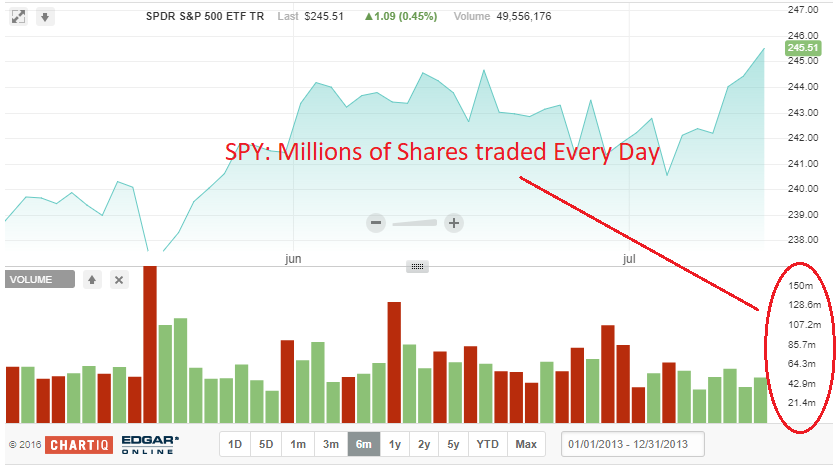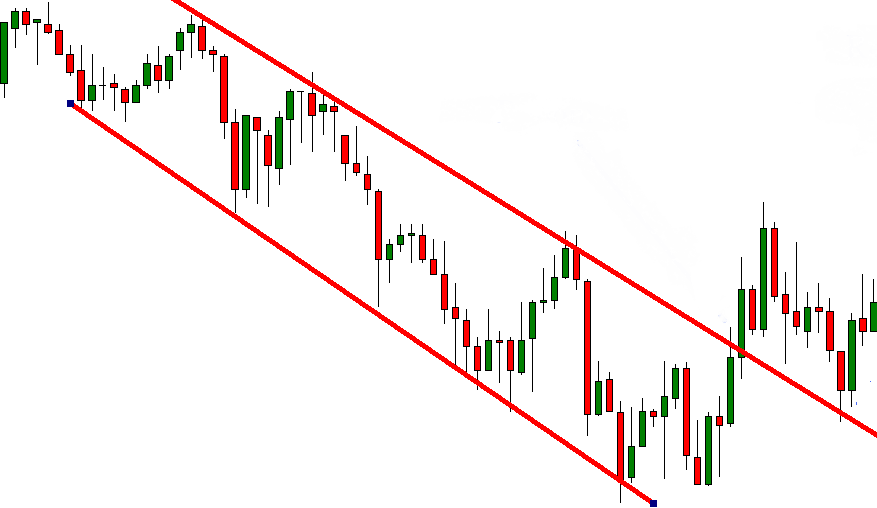
There are literally endless different stock trading mistakes. But those discussed in this article are some of the most common stock trading mistakes I know of. Many, especially new traders sadly make these mistakes. If you are able to avoid most of these, you will definitely be on a better track than 80% of all traders. Even though this article is named ‘common stock trading mistakes’, it isn’t only applicable to stock trading but to other kinds of trading as well. These mistakes can also be seen in options trading, Forex, Cryptocurrencies and other asset classes. So if you don’t trade stocks, this article is still very relevant. Read this article carefully to get the most out of it.
Video Lesson
You can watch this video instead of reading the entire article. The first ten trading mistakes are explained in a visual manner in the following video:
1. Fear Of Missing Out (FOMO)
Let us start with this very common (stock) trading mistake: The fear of missing out, also known as ‘FOMO’. The English Oxford Dictionary defines ‘FOMO’ as the following:
“Anxiety that an exciting or interesting event may currently be happening elsewhere”
In trading, this means that traders are scared of missing out on great profit opportunities. This can lead to many of the following problems like overtrading, not cutting losses, not taking profits… Traders with FOMO think they are the only ones missing out on countless amazing trading opportunities. Thinking like this will impact your trading very negatively. It is not the end of the world to miss a great trade. There will always be other potential trades with the same or even better potential.
2. Overtrading
Overtrading can be a direct result of FOMO. If you think every trade will turn out great and you really don’t want to miss out on that, you will automatically trade too much. Trading too often is generally a very common problem amongst most (newer) traders. There are some measures to prevent this to some degree like the PDT Rule. But most traders still trade too much. The idea behind this is the thought process that more trades will lead to better results. This is just not true (for most trading strategies). Try to focus on a few good trades instead of tons of average to bad trades. Even amongst the more advanced traders, most gains come from few very good trades. Even though this might seem counterintuitive, it is true. More trades won’t equal more money.
3. Being Stubborn And Not Admitting When You are Wrong – Not Cutting Losses
This is a very dangerous mistake that sadly so many traders make. Somehow admitting being wrong is a very hard task for most traders. But it is necessary to admit to become a successful trader. Every trader, no matter at what skill level will have losses. What differentiates the winning traders from the losing ones is that the winning traders keep their losses small. They admit their wrong being and take the loss. Don’t be stubborn and hold your position for ages. The loss can always become even bigger, so just take it when it still is small instead of hoping for a pullback.
If the price would turn around, you can always get back in. Even if not, it doesn’t matter as long as the loss still is small. Huge losses don’t only mess with your trading account but also with your psychology. A huge loss will impact your confidence very negatively. Generally, losses impact traders more than gains. Losses can’t be avoided, big losses can! So avoid them by cutting losses fast.
If you have trouble cutting losses, I recommend using stop-losses as these get you out of the trade automatically as soon as the price moves to a certain point.
4. Not Taking Profits
A common saying is: “Cut losses short and let the winners run”. Many traders including me disagree with this. It is very important to take profit. Just like cutting losses, you should also cut your profits. Obviously, you shouldn’t cut your profits just as fast as your losses. But you should definitely take profits. So many traders always want a few Dollars more. Before they know it, their profit suddenly has turned into a loss. There is almost nothing worse than having to take a loss after being up a lot. Don’t let this happen to you, just take profits! Once again, it doesn’t matter if the price continues in the correct direction after you closed your position. You took your profit and should be happy. Just make sure that your profits aren’t much smaller than your gains (for stock trading…).
Tastytrade – an awesome financial network even has done some backtesting on taking profits on some options strategies early. One test even shows that taking profits at 50% on SPY strangles improved their winning percentage by about 20% (See the video, here). That is a huge improvement!

5. Skipping The Education – Not Being Prepared

This is yet another huge and common trading mistake that probably the majority of all traders make. The mistake is not getting proper or any trading education before starting to trade. Sadly, most ‘traders’ hear of trading, sign up to a broker, begin to trade random securities due to random reasons and end up losing. You have to prepare yourself by studying before actually starting to trade! Otherwise, you won’t have a clue what you are doing. It is nothing to be ashamed of. Everyone has to start somewhere. Trading is a profession. Other professions take years of studying and thousands of Dollars. Obviously, you won’t be able to trade with no training, education, preparation… Please don’t be one of the 90% losing traders and skip the most important aspect of trading: education! It is not enough to watch a few random youtube videos and read a few random articles.
I recommend, reading my article on how to learn how to trade to learn what trading education you need.
6. Having No Plan – Not Sticking to the Plan
Having a plan is another essential factor of profitable trading. The next is sticking to that plan. You should always have a determined trading plan BEFORE entering any position. To make sure you have this, go through the plan in your head before sending out any orders. This plan should have a defined risk level, exit points, risk/reward…
If you don’t have a plan, you are basically just hoping that the stock is going to do what you ‘hope’. Hope is not a strategy! There should be some real reasons why you think the price will move in the expected direction. If you don’t have a trading plan, you probably should get some more trading education. Trading education should teach you how to trade with a plan. ALWAYS have the plan before entering into your positions.
Just as important as having a plan is sticking to it. Trading plans exist to protect you against price moves in the ‘wrong’ direction. It tells you when to cut losses and when to take profits. If you don’t stick to it, it will be useless. Sadly, many traders get emotional and stubborn leading to the abandonment of the initial plan.
7. No Risk Management
Risk management is another deciding factor for profitable trading. Every successful trader will tell you that risk management is essential for your trading. Most unsuccessful traders get blinded by the potential reward and they, therefore, ignore the risks. This should be the other way around. Don’t think about how much money you can make on a trade. Think about how much money you can lose first! Then set a risk level that you are comfortable with. Ideally, the potential award should then be somewhat higher than the risks you are taking on. A positive risk/reward ratio will allow you to lose more. This is just another way of protecting your capital. You should constantly re-assess your risk, even after entering your position. Then adjust your position accordingly.
Check out this article for a basic risk management introductory course.
8. Wrong Position Sizing – Going In Too Big
This mistake goes hand in hand with the previous one. Having too big positions is just another phrase for too much risk. As many traders think of their potential gain before they even consider the risk, they think: the bigger the position, the bigger the potential profit. This is true, but the same goes for the potential loss.
As a rule of thumb, never risk more than 10% of your account per trade (ideally, you should risk less). Never risk losing more than that. This doesn’t mean that your entire position size only is 10%. You just shouldn’t risk more than that.
Example: Stock XYZ is trading at $100 and your trading account has $10’000 in it. You don’t want to risk more than 10% ($1’000). You buy 50 shares and that cost you 50 x $100 = $5’000. As you don’t want to risk more than $1’000, you have to cut your losses as soon as the stock falls below $80. This is a very simplified example.
Your position size obviously depends on your account size. Some smaller accounts just can’t keep their position size so small. The bigger your account becomes, the smaller your position sizing should become. I wouldn’t risk losing more than 5% in larger accounts.
Furthermore, I don’t recommend using a lot of leverage, especially if you aren’t completely sure what you are doing yet. Never over-leverage yourself even if it might seem intriguing. You gains are multiplied, but so are your losses.
NEVER ever trade with 100% of your account. Otherwise, you are practically guaranteed to blow up!
9. Getting Emotional
Emotions don’t go along with trading very great. Trading requires rational thinking and emotions really can influence your trading negatively. It is very hard to put your emotions aside as you are risking your hard-earned money and there will automatically be an emotional connection to it. But it is so important to control your emotions and avoid getting greedy or scared of losses. If you ever find yourself in the situation where you are changing your trading plan mid-trade or you are wishing/praying that the price will move in your direction, you are letting emotions influence your trading. Try to look at trading as a game and your money as figures on a screen. This may sound crazy, but it is important to avoid emotions during trading.
Smaller position sizing and less risk do also help against emotions while trading. Generally, a well-thought-out trading plan can keep emotions in check.
You can find some tips to trade more mechanically in my article on trading psychology.
10. Not Tracking/Analyzing Trades in a Trading Journal
Every trader should keep a trading diary. Keeping a trading journal has lots of benefits. It allows you to learn from your mistakes and that is paramount for successful trading. Always track all trades and go back to analyze them. You can learn what you did right from the winning ones and learn what you did wrong from the losing trades. This is one of the best ways to become a better trader and to improve your trading strategy. If you want to learn about an easy way to keep a trading journal, check out my Excel trading journal template.
11. Using Unregulated Brokers
Even though your broker choice isn’t the most important thing when it comes to trading, it does play a big role. You should definitely base your broker choice on some good research and not on any fancy commercials or anything similar. Read reviews, compare different brokers… When looking at brokers, most people think commissions are the most important thing to look at. This is not true. The most important thing regarding brokers is regulation. Is your broker regulated and if yes by whom? If it is not, change broker. Non-regulated brokers practically are scams or at least very sketchy. Ideally, your broker is regulated by a big respected regulator like FINRA, SEC… I personally wouldn’t trust brokers based in countries like the Bahamas, Cyprus… with my money. After finding out if your broker is well-regulated, you can look at other features and commissions…
To learn more about this, check out my step by step guide to choosing the best possible broker.
12. Being Stubborn – Not Adapting
This is another relatively common trading mistake. The world is an ever-changing place and with it change the financial markets. Therefore, some strategies stop working. If you realize that a strategy stops working, stop using it. You can’t force any strategy. Strategies come and go. Some are better than others. Some need adjustments to work again. Always try to adapt as a trader to the strategies that are working in the current market. Don’t be stubborn and try to stick to one strategy even though it isn’t working as it should.
13. Changing your Strategy After a few Losses
When changing or adjusting a trading strategy it is crucial to base the adjustments on large amounts of data. The more the better. Don’t try to change a strategy after a few losses. All strategies will have some losing streaks. This doesn’t mean that the strategy isn’t working anymore. Before changing any strategy, I recommend tracking as many setups as possible and evaluating their performance over time. After a substantial amount of tracked trades, you can consider adjustments if they are necessary.
14. Treating Trading as a Short-Term Game
This mistake is linked to the previous one. Trading is a long-term business and therefore, you should treat it as something for the long run. You should want to do it for the next decades. Don’t focus on short-term gains, focus on the long run instead. You won’t get rich overnight, even though some sites advertise that. You have to find a working strategy and repeat it over and over and over and over… again. If it stops working, you have to adapt to the changing market conditions…
Furthermore, don’t expect to become rich from one perfect trade. The way to earn a lot of money with trading is by taking countless of smaller profits along the way. Don’t always aim for home runs and insane returns per trade. Small profits add up over time.
“Trading is a Marathon, Not a Sprint!”
15. Having Unrealistic Expectations
Have realistic goals. If trading would make you rich overnight with zero effort, everyone would be doing it. Most professional/institutional traders would be more than satisfied with an average yearly return of 20%. So don’t expect to make hundreds of percent every year, especially not in the beginning. You won’t turn a few thousand Dollars into a few Million within a few weeks, months or probably even years. So don’t expect it.
Additionally, trading takes work. It isn’t easy, otherwise yet again, everyone would be doing it. You will have to sit in front of the computer for many hours, analyzing and tracking (potential) trades/learning to trade… Successful trading does take some work. No matter if some ‘traders’ advertise with insane goals in only a few hours per week. I am not saying that there aren’t any profitable strategies that only take little time. The main work isn’t the trading itself, but the preparation for it. You have to get the correct trading education first. Studying trading does take time.
16. Adding to Losing Positions
This is linked to the third mistake (‘being stubborn and not cutting losses’). Not cutting losses is bad enough by itself but adding to losing trades is an entirely different game. If you are proven wrong and your plan clearly didn’t work out, the last thing you want to do is add to your position. This will just lead to even more disaster. Just cut losses! It doesn’t matter if the trade theoretically could turn around. You already were proven wrong. Never add to losing positions. This will just open you up to even more risk as your position size will get out of control. Mostly this will end in huge losses and destroyed confidence.
This doesn’t mean that you never should average/scale in to a trade. If your entry or exit plan is to do so, then go ahead.
17. Trading Illiquid Assets
Liquidity is paramount in trading. Without liquidity, it is much harder to enter and exit trades, the Bid/Ask spreads are much wider. Not being able to exit winning or losing positions really is a bad situation to be in. Even if you are able to exit your position, you will have to get out (and in) with bad pricing as the spread usually is very wide on illiquid assets. I recommend avoiding stocks/ETFs/Indices with much less than one Million shares traded per day. Additionally, you should be under 1% of the daily trading volume as you don’t want to impact the asset’s price dramatically yourself. But this shouldn’t be a problem for most traders.
To learn more about liquidity, check out my article on the importance of liquidity.

18. Expecting to Win 100% of the Time – Trying to be Perfect
This is something many beginner traders fail to understand. But it is important to understand that all traders lose! Yes, that’s right, even the best of the best traders lose once in a while. A very good winning percentage is around 70%. This still means that you will lose 30% of the time. It does not matter how amazing your trading strategy seems to be, sometimes you will be wrong. This is completely natural. Just make sure to keep those losses small.
There is no perfect trader out there. Everyone makes mistakes. You will always be able to improve. Don’t expect to always execute every trade in the best possible way. Just try to profit from the main move. It is much easier to take smaller gains over and over again than it is to nail home runs. So don’t expect to always enter at the lowest possible point and exit at the highest.
19. Trading for a Living and Depending on Trading Income
This may sound like a weird trading mistake to most people. ‘Isn’t it the goal to trade for a living?’ Yes, it is. But you shouldn’t depend on trading. If you have to make a certain amount of money from trading in the coming week, you probably won’t make it. You just can’t force gains. Trading under pressure is one of the worst things to do. Trading is something very unique as it does not give you any security. Sometimes you will make money and sometimes you won’t. On some occasions, you will even lose money. If you want to trade full-time and make a living off of it, it is crucial to have enough money to be independent from your trading results. Never trade with money that you can’t afford to lose.
20. Following (Random) Trade Alerts
Moreover, you should never trade any (random) trade alerts. No matter if the alert is from some big, well-known site/trader, message board, subscription… The first reason why you shouldn’t do that is that you have no idea why you are entering that trade. In other words, you don’t have a plan and you should never trade without a plan. You should be an independent trader who thinks for himself and trades due to his own reasons.
The second reason is that a big amount of people issuing trade alerts/recommendation have a bias. Some get compensated for issuing their alerts. Others have pre-existing positions and just want to push the price higher to get out of their position at a profit. There are many reasons why you should never trust any trade alerts. So don’t do it!
21. Using Too Tight Stop Losses
Did you ever get stopped out of a position whereafter the stock proceeded just the way you thought? If yes, you were probably using too tight stop losses. Luckily, there is an easy fix for this problem and that is moving the stop loss a little further out. You need to give the price some room to move in. Otherwise, you will get stopped out of positions due to general market ‘noise’. But don’t move it too far. You should still have your risk under control. When moving stop-losses further out, you should reduce your position size as the risk increases.
22. Using Too Far Out Stop Losses
Even worse than too tight stop losses are stop losses that are too far out. You should give the price some room to move in but not too much. Otherwise, your losses can get out of control. Remember to always set a logical exit point before entering. This exit point shouldn’t overshoot your risk tolerance discussed in mistake seven and eight. If you set your stop-losses too far out, you sort of destroy their initial purpose which is to cut losses and protect your money.
23. Trading In Other Asset Classes Without any Education
There are many different asset classes) available to trade: Stocks, penny stocks, ETFs, Indices, Options, Futures, Cryptocurrencies, Forex just to name a few. It is a good idea to trade more than one. But it is a bad idea to try out new asset classes without getting the right education first. Just because you are a successful stock trader, does by no means mean that you will be a successful options trader. It is very important to understand this. There are many different trading niches and each of them requires its own training
24. Not Differentiating Between Paper and Real Trading
Results achieved from paper trading do not translate to real results. Yes, paper trading is a great way to get started and I definitely recommend it. But there is nothing that compares to real-money trading experience. As you may know, emotions play a huge role in trading. But (sadly,) emotions aren’t involved in paper trading as you don’t have a connection to paper money. Paper trading can’t teach you the emotional aspect of trading, so don’t expect the same results.
A good alternative to paper trading is trading with very small position sizes. By doing this, you have a connection to the money but your risk is minimal.
You can learn more about paper trading here.
25. Ignoring the Trend
In the markets (and specific assets), usually, some kind of trend exists. A very common trading mistake is ignoring this trend and even trading against it. So many traders try to pick the top or the bottom to profit from a reversal. It is very hard to spot reversals on big trends. Don’t trade against the trend. You should always try to put the odds on your side. What are the chances that you spot the reversal of a long-term trend? They are low, so just go with the trend and profit from it.
An example for that is that buying usually is better in bull markets and selling/shorting is better in bear markets more often than not.
[KiwiClickToTweet tweet=”The Trend is Your Friend.” quote=”The Trend is Your Friend.”]

Bonus: 26. Trading Binary Options
I know this is a very specific mistake. But trading binary options is, in my opinion, a mistake by itself. Binary options aren’t real assets. It is statistically very hard to break even with binary options. I don’t want to go through the details in this article as it isn’t a very common trading mistake. Just make sure to avoid binary options, no matter what anyone tells you.
To learn about all the reasons why binary options aren’t legitimate investment products, check out my binary options review.
Conclusion
Obviously, these aren’t all stock trading mistakes in existence. These are just a few examples of the most common stock trading mistakes.
I hope this article didn’t make trading sound too complicated or too hard. These are just some of the negative aspects of beginner trading. If you are able to avoid all these mistakes in your trading, I guarantee you that your trading will improve significantly!
Summed up, you should always have a plan, stick to it and don’t let emotions influence your plan. If you don’t know exactly what you are doing and don’t have a logical, working plan yet, you need more trading education. Otherwise, manage your risk, don’t overtrade and finally, don’t be afraid of missing great trades. There will always be more in the future. Trading is a long-term game so treat it like a long-term business!
Hopefully, you enjoyed this article and could take away at least one mistake to avoid in your future trading career. If you did, I would love to hear which one it was in the comment section below. If you have any other mistakes that I didn’t think of, please tell me as well.



Oh…my…God! What a relevant article for any trader! I have been trading forex for the last 9 years and due to many of the mistakes listed in your post I have never been able to be consistently profitable. My big three are overtrading, over leveraging, and not cutting losses when they are small. Recently I have been working on these by only trading one pair at a time with a predetermined leverage per dollar amount in my account and cutting losses if the trade isn’t going in my favor within a certain amount of time. Wish me luck. There were other things you mentioned that I need to work on as well. Thanks for the insight.
Your positive feedback is greatly appreciated! Sometimes it can be very hard to avoid all these trading mistakes. But good luck with your future trading.
What a comprehensive list of trading mistakes!
My first career was on Wall Street as a technical analyst, so I have seen a lot of traders, successful and not. Your list is really thorough.
Now to apply it, to honestly identify where I am likely to go wrong. I know past mistakes I have made, are going too big on any one trade, too tight a stop, not cutting the loss and doubling down instead, and inconsistent risk management. Those caused some losses, and recovery from losses is not nearly as much fun as cutting them short and working for the ones that make a profit!
Thanks for the awesome comment!
Great article, you could have called this “25 Mistakes James Has Done”
I can vouch for tastytrade, I learned so much from them. I listen almost every day. I can’t get a tastyworks account yet, they only have an Apple format last I checked.
I don’t know if I agree with 6 – not sticking to the plan though. I think as markets move, your outlook on a position may change. But everybody has to do what they want, your money, your plan!
Cheers!
Thanks for the great comment James. Tastyworks isn’t only available for apple. You can learn more about them in my review, HERE.
You are absolutely right about the fact that markets change and traders have to adapt (mistake 12). But having a trading plan and sticking to it is a great way to counter emotional trading. Many traders, especially newer ones struggle with this. During a trade, when money is on the line, it can be hard for people to think rationally. Therefore, making changes in your initial trading plan after the entry often is based on emotions rather than rational thinking.
But not all traders struggle with this and if you are able to think rationally during your trading, it can be a good idea to adapt your plan to changing conditions. Ideally, a good plan already should have changes in price, volatility… under consideration so that you don’t have to adapt it.
Good point though!
I can honestly say as a newer trader, I can relate to absolutely every one of those. Some of the 26 listed I didn’t even know of but can admit to falling to those mistakes! I’d say my most frustrating one is #4. I trade Forex, and I cant tell you how frustrating it is to not take my profits due to my greedy side thinking it will keep going in the direction of my trade, and before I know it I’ve waited long enough for it to be a net loss.
Having said that, great article. I am taking your list seriously because it is very applicable. Thank you!
You are very welcome. Ending up with a loss when you once had a great profit really is one of the most frustrating things in trading. It can totally destroy your confidence. Therefore, you should always set a take profit goal before entering and stick to it, so that greed doesn’t take over. (Rather take profits too early than too late)
Great article! Your in depth look at the mistakes that people make really makes you think hard about life as a trader. I used to play around years ago, but when so many of my friends lost their pensions in 2008, I never looked back. Something told me a couple weeks prior to that incident to sell my stocks and invest in real estate, so I dodged the bullet. Thanks for the wisdom… I might rethink it.
Clay
Thanks for sharing.
Thanks, thanks and …thanks
You are very welcome. Glad to see that you enjoyed it.